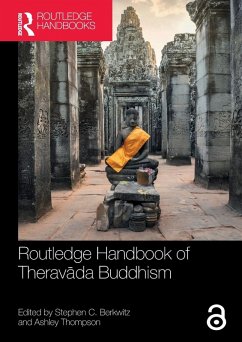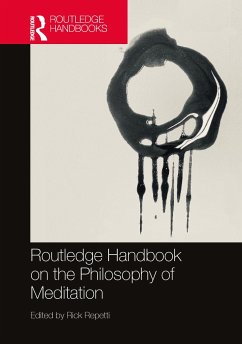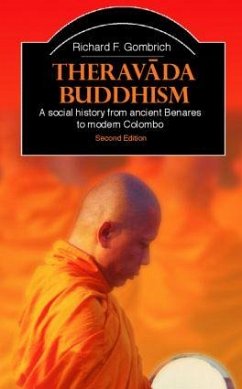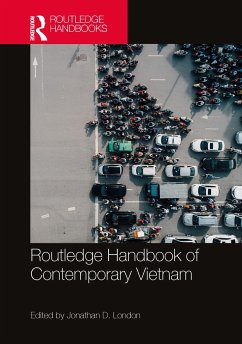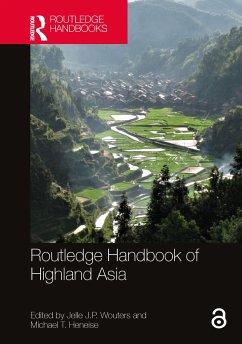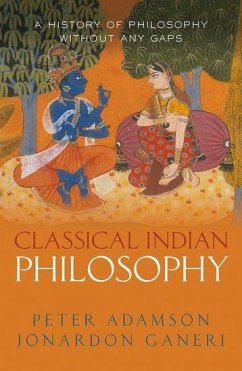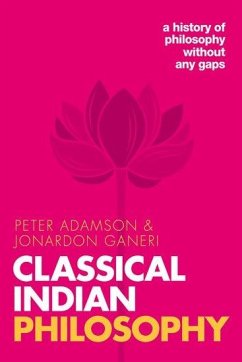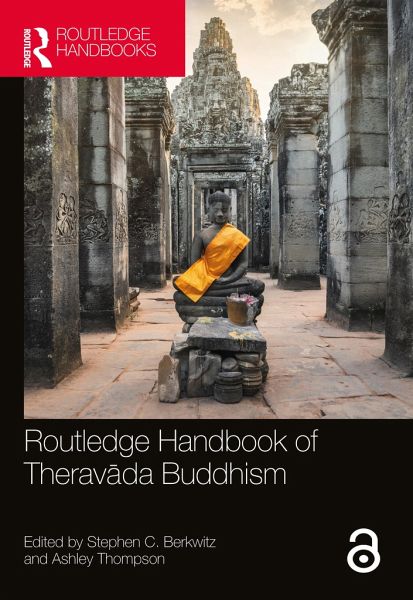
Routledge Handbook of Therav¿da Buddhism

PAYBACK Punkte
117 °P sammeln!
Among one of the older subfields in Buddhist Studies, the study of Theravada Buddhism is undergoing a revival by contemporary scholars who are revising long-held conventional views of the tradition while undertaking new approaches and engaging new subject matter. The term Theravada has been refined, and research has expanded beyond the analysis of canonical texts to examine contemporary cultural forms, social movements linked with meditation practices, material culture, and vernacular language texts. The Routledge Handbook of Theravada Buddhism illustrates the growth and new directions of scho...
Among one of the older subfields in Buddhist Studies, the study of Theravada Buddhism is undergoing a revival by contemporary scholars who are revising long-held conventional views of the tradition while undertaking new approaches and engaging new subject matter. The term Theravada has been refined, and research has expanded beyond the analysis of canonical texts to examine contemporary cultural forms, social movements linked with meditation practices, material culture, and vernacular language texts. The Routledge Handbook of Theravada Buddhism illustrates the growth and new directions of scholarship in the study of Theravada Buddhism and is structured in four parts:
Ideas/Ideals
Practices/Persons
Texts/Teachings
Images/Imaginations
Owing largely to the continued vitality of Theravada Buddhist communities in countries like Sri Lanka, Myanmar, Thailand, Cambodia, and Laos, as well as in diaspora communities across the globe, traditions associated with what is commonly (and fairly recently) called Theravada attract considerable attention from scholars and practitioners around the world. An in-depth guide to the distinctive features of Theravada, the Handbook will be an invaluable resource for providing structure and guidance for scholars and students of Asian Religion, Buddhism and, in particular, Theravada Buddhism.
The introduction and chapter 20 of this book are available for free in PDF format as Open Access from the individual product page at www.routledge.com. It has been made available under a Creative Commons Attribution-Non Commercial-No Derivatives 4.0 license.
Ideas/Ideals
Practices/Persons
Texts/Teachings
Images/Imaginations
Owing largely to the continued vitality of Theravada Buddhist communities in countries like Sri Lanka, Myanmar, Thailand, Cambodia, and Laos, as well as in diaspora communities across the globe, traditions associated with what is commonly (and fairly recently) called Theravada attract considerable attention from scholars and practitioners around the world. An in-depth guide to the distinctive features of Theravada, the Handbook will be an invaluable resource for providing structure and guidance for scholars and students of Asian Religion, Buddhism and, in particular, Theravada Buddhism.
The introduction and chapter 20 of this book are available for free in PDF format as Open Access from the individual product page at www.routledge.com. It has been made available under a Creative Commons Attribution-Non Commercial-No Derivatives 4.0 license.





